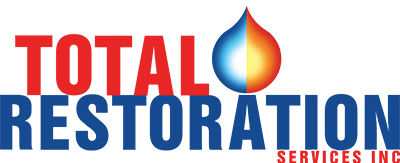Restorative Drying
Restorative drying, also known as structural drying or water damage restoration, is a process carried out by professional restoration companies to address water damage in residential or commercial buildings or structures. When a property experiences water intrusion from scenarios such as flooding, burst pipes, or plumbing leaks, it can result in extensive damage and create a conducive environment for mold growth - a common issue in water damage scenarios.
The primary goal of restorative drying is to efficiently remove excess moisture from the affected areas, aiding in water damage repair, and restore the property to its pre-damaged state. Expert restoration companies employ specialized equipment and advanced water damage restoration techniques to accelerate the drying process and minimize the potential for secondary water damage, which can be as detrimental as the initial damage.
Here's an overview of the steps involved in the professional restorative drying process:
-
Assessment: Skilled restoration professionals assess the extent of the water damage by conducting a comprehensive water damage inspection of the affected areas. They accurately determine the category and classification of the water damage to design an appropriate, tailored water damage restoration strategy.
-
Water Extraction: Standing water is meticulously extracted using powerful pumps or industrial-grade wet vacuums. The dedicated restoration team works rigorously to remove as much water as possible to prevent further damage and facilitate the structural drying process.
-
Moisture Mapping: Moisture mapping is a critical part of water damage repair that involves using state-of-the-art moisture detection tools such as thermal imaging cameras and moisture meters. This technique identifies hidden pockets of moisture within the building materials and structural components, effectively guiding the drying process and ensuring all affected areas are addressed.
-
Drying Equipment Setup: Restoration companies leverage a blend of industrial-grade air movers, high-capacity dehumidifiers, and specialized structural drying equipment to establish an optimal drying environment. Air movers enhance air circulation, while dehumidifiers extract moisture from the air, significantly aiding in the drying process.
-
Monitoring: Throughout the water damage repair process, the restoration team continuously monitors the moisture levels using sophisticated tools like moisture meters and hygrometers. This continual oversight allows them to track progress, adjust equipment as needed, and guarantee that the affected areas reach the desired dryness levels for complete water damage recovery.
-
Decontamination and Mold Prevention: In cases where water damage involves contaminated water or the potential for mold growth, restoration companies may perform stringent decontamination procedures. This step may include applying antimicrobial treatments and employing proven techniques to inhibit mold growth and ensure a safe and healthy environment.
-
Structural Repair and Restoration: Once the affected areas are thoroughly dried, the restoration company can proceed with necessary repairs and restoration work for complete water damage recovery. This may involve replacing damaged drywall, flooring, or other building materials, as well as addressing any cosmetic or structural issues triggered by the water damage.
Restorative drying requires expertise and cutting-edge equipment to effectively mitigate water damage and prevent further issues such as mold growth or structural deterioration. This comprehensive process is typically carried out by professional restoration companies with vast experience in handling a range of water damage incidents.
 Points
Points
